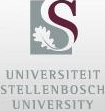Thanks to the hard work and dedication of a group of staff and postgraduate students at the General Linguistics Department at Stellenbosch University (SU), the first South African Sign Language (SASL) book and DVD set that can be enjoyed by Deaf and hearing children simultaneously was recently released. The set consists of a multi-authored, English book called Sign Language Savesand an accompanying DVD in five languages – South African Sign Language, Afrikaans, English, isiXhosa and isiZulu.
Deaf children can now read the English book or watch it in SASL on the DVD while hearing children are able to follow the story along with their Deaf peers in one of the four language translations on the DVD while also seeing the SASL.
The team that worked on the project included Maryke van Velden, a Project Illustrator and Creative Writer who handled the aesthetic aspects of the book design; Sima Mashazi, a junior lecturer and MA student who did the SA English and isiZulu voice overs; Frenette Southwood, who did the Afrikaans voice over; and PhD student Khanyiso Jonas, who did the isiXhosa voice over. Vanessa Reyneke, a Project Coordinator for the development of teaching and learning support material in SASL in the General Linguistics Department, was responsible for the signing on the DVD and the management of the entire project. The project is funded by the Rector's Strategic Fund, with an additional book to follow later in 2019 and another in 2020.
According to Reyneke, the project came about when the team started investigating the possibility of developing SASL reading material for schools that Deaf and hearing learners could read together.
“We came across a Flemish children's book that we could turn into a SASL book and DVD with characters that were unique to South Africa," explains Reyneke.
Reyneke approached the authors of the book, who agreed that the story could be reproduced in South Africa and the sign language amended to reflect SASL signs.
To get to the final book and DVD set, the team had to follow a long process from securing copyright to publish the story to having some illustrations amended – the animal characters, all South African wildlife, use signs in the illustrations, and the original Flemish Sign Language signs had to be replaced with SASL signs.
“We were attracted to the Flemish book because the characters were all animals found in Africa. We thought familiarity with these animals would open up the story to children in South Africa from different cultures and backgrounds. There were some things we were requested to keep the same, such as Noah the Lion's tail, which twitched to show just how excited he was. He is also the main character and always wears red in the Flemish book, so we did the same in the South African version."
“Thereafter we had to translate the SASL on the DVD to Afrikaans, South African English, isiZulu and isiXhosa. While there is only one sign language version of the story on the DVD, the voice overs were done in the different languages."
One of the most important things about this series, says Reyneke who is Deaf herself, is that hearing children are now exposed to and made aware of SASL.
While sign language is taught in Deaf schools, it is not an official South African language and therefore not one that many hearing children are exposed to.
“Sign language is something that remains hidden, out of the public eye. Even when you see sign language on TV, it is being done by an interpreter in the bottom right corner of the TV screen. So we have limited exposure to South African Sign Language," says Reyneke.
“With this book, we can expose hearing children to sign language, which I think is a great idea as it will create an awareness of the language amongst hearing children. Who knows, it may even prompt them to learn the language in order to communicate with Deaf persons."
The book and DVD set will also allow hearing parents with Deaf children to read with their children.
“The majority of Deaf children are born to hearing parents and thus far there has been no SASL material around that allows hearing parents to enjoy a story with their Deaf child. It creates an opportunity for parents and children to bond and build their relationships."
While Reyneke took the lead on the project, she is quick to point out that she would not have been able to complete the project without the assistance of her colleagues, Van Velden and Mashazi, and PhD student, Jonas.
“Because I cannot hear, I also had to rely on an interpreter, who is able to hear and sign and who could ensure that that the tempo of my signing matched that of the spoken language and visuals seen on the screen."
Now that the first book and DVD set is publicly available and another two are in the process of being illustrated, Reyneke hopes to also produce a DVD with voice overs in the Afrikaans dialect, Kaaps.
“We did a quick test by sharing the second book, which is currently being illustrated, with a group of hearing and Deaf children and they really loved it. They were asking when they could get some more books like this to read."
For now, Reyneke is content knowing that together with her colleagues, they have opened up a whole new world to both hearing and Deaf children to enjoy together.
“This is something that was not available in South Africa before and now that it's been done, I hope it shows that a lot more is possible in future."
Photo: The first South African Sign Language (SASL) book and DVD set that can be enjoyed by Deaf and hearing children simultaneously was recently released thanks to the hard work of the General Linguistics Department at Stellenbosch University and funding received from the Rectorate's Strategic Fund. (Photo supplied)

